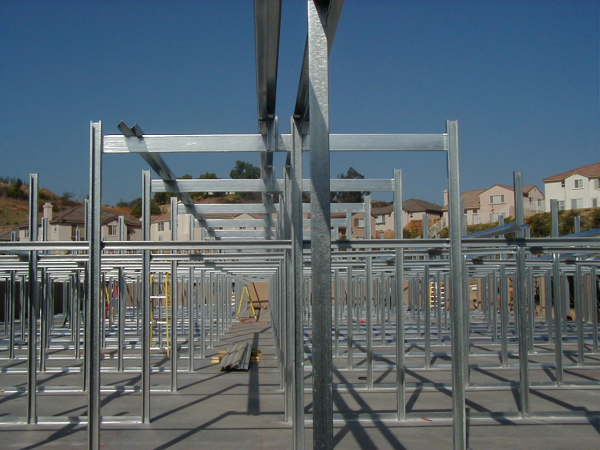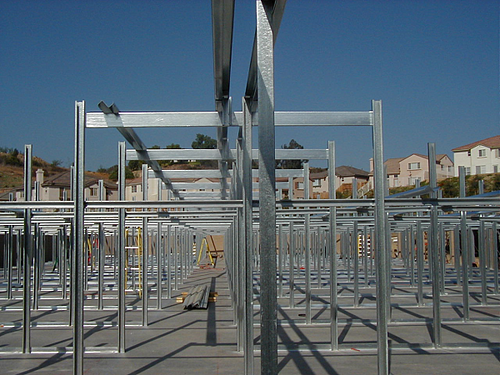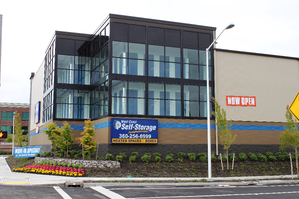
Make Your Plans For Self Storage Devlopment in 2013
 As 2012 come to an end, it is time to start planning for your self-storage business growth in 2013. With increasing land costs, escalating city and county building requirements, self- storage developers are getting more creative at finding and developing self-storage building sites. In this article, we provide information about what you will need to consider when acquiring property for your self-storage buildings.
As 2012 come to an end, it is time to start planning for your self-storage business growth in 2013. With increasing land costs, escalating city and county building requirements, self- storage developers are getting more creative at finding and developing self-storage building sites. In this article, we provide information about what you will need to consider when acquiring property for your self-storage buildings.
The highly competitive self-storage market requires a level of sophistication when choosing your location and developing your self-storage project for maximum profits. As with all real estate ventures, the old adage, “location, location, location,” still applies.
In order to maximize profitability and reduce liability, it is critical to understand the current storage saturation levels in your area and the types of storage that are most in demand in your target market.
Understand the Market for Self-Storage In Your Area
For instance, in rural areas, the market may need bigger storage units and drive up access to store large farm equipment. If your storage unit will be located near a college, the market will demand smaller, less expensive storage units. We have worked with some Self Storage developers that cater to very specific markets, such as high end cars, RVs, boats, wine storage, online product fulfillment, etc. thus attracting tenants from well outside their geographic area due to the very specific offerings they build into their facilities. See our article on Storage for Boys and Their Toys.
Determine Supply and Demand
There is always the possibility that supply in certain areas may be surpassing the demand from customers for storage. Higher monthly turnover, more short-term tenants, increased vacancy rates and move-in discounts are signals that there may be over building for self-storage in a given area. In an area where there is a lot of construction of new housing units and business buildings, this market saturation could be temporary. Once the neighborhood matures, demand could eventually "catch up" to the supply for storage. On the other hand, overbuilding in an area plagued by vacant buildings and declining neighborhoods may be a permanent problem.
Start With a Feasibility Study
Begin with a feasibility study. You can use census material to obtain information about the one-, three- and five-mile radius areas surrounding the proposed facility site. This information should include current population, anticipated growth, the population mix (renter/owner, multi/single family) and average income. Most of this valuable information can be found at your local planning department.
Know your current and potential competition. Both existing and planned competitors should be plotted on the map of the area. It is also a good idea to conduct onsite visits to all competitors. Have a conversation with facility managers to determine the unit mix, rental rate and occupancy level, to help you determine market saturation and calculate income potential.
Following on-site visits, determine the total square footage, as well as the actual number of storage units for existing storage in the market area. Traditionally, a market was thought to be saturated when two to four square feet of rentable space per person exists, depending upon the population, housing and commercial mix in the neighborhood. Though, because the amount of square footage of existing self-storage per person can vary wildly from one market to another there is no real definition for market saturation in the self-storage business. Some markets can support between eight to ten square feet per capita. The Sunbelt can generally absorb larger amounts of self-storage where people tend to own more leisure and recreational equipment.
The type of housing also affects how much storage a market can accommodate. For instance, if you are planning to build in an area where the majority of homes have basements, enclosed garages and large closets, your target market may not need as much storage as markets that have a high density of condominium and apartment complexes or no frills single family homes that are often found on military bases.
The age of the population, mobility rate, employment status and income are other important measures.
Site Selection Considerations

Choosing a site for your self-storage facility should factor in the following considerations: availability of land, appropriate zoning and commuter traffic patterns, visibility from the road, ease of access, proximity and density of potential customers, current storage saturation level (competition) and expected growth for the area.
A growth area, for example, will generally enable you to get to your desired occupancy quickly. High ratios of multi-family residences will create a demand for smaller units, and smaller units generally pay a higher return on the dollar invested. A location near the center of a dense urban area, preferably on a major artery, is ideal for fast rent up. A freeway location is also desirable but less so than a major artery that passes through the neighborhood that the facility will serve.
What Should You Pay for the Land?
The price Self Storage Developers should pay for their land is a question that is much debated. The current rule of thumb for land cost is approximately 25-30 percent of total development cost. At $1.25 per gross square foot and assuming 40 percent coverage, net cost for land is $3.13 per rentable foot of building.
In many markets, land use is maximized by developing multi-story self-storage with two-stories and even three and four-story facilities.
Ultimately, the rental rates in the market drive the cost that a self-storage developer should pay for the land. Often, the most common cost/operating ratio of self-storage is in line with apartment rental rates. Depending on the location, self-storage projects can generate the same income per square foot as medium priced apartment properties in the same market area. And they can achieve this income at roughly one half the construction and operating costs.
The most common "state of the art" facility will be about 60,000 - 80,000 net rentable square feet, cost $45-65 per square foot to construct (outside of existing land costs), and have break even operating expenses in the 40-60 percent range (not including debt service) of total stabilized income. A well designed and located facility will successfully operate in the 83-93 percent occupancy range, though we have seen successful self-storage operations with occupancy rates as low as 70%.
It often takes 18-24 months for many self-storage facilities to realize its full income potential in a competitive market. Large self-storage operations could take longer, up to 36+ months for 100,000 square foot size facilities to achieve stabilization.
Look for our next blog post about planning and budgeting your Self Storage Construction project. In the mean time, you may want to read about the Ten Most Common and Costly Mistakes in Self Storage Building Development.
MakoRabco is the leader in Steel Self Storage Design, Engineering and Construction. We would love to help you with your next Self Storage Building Project. Find out about our FREE Site Design and Engineering Services.

